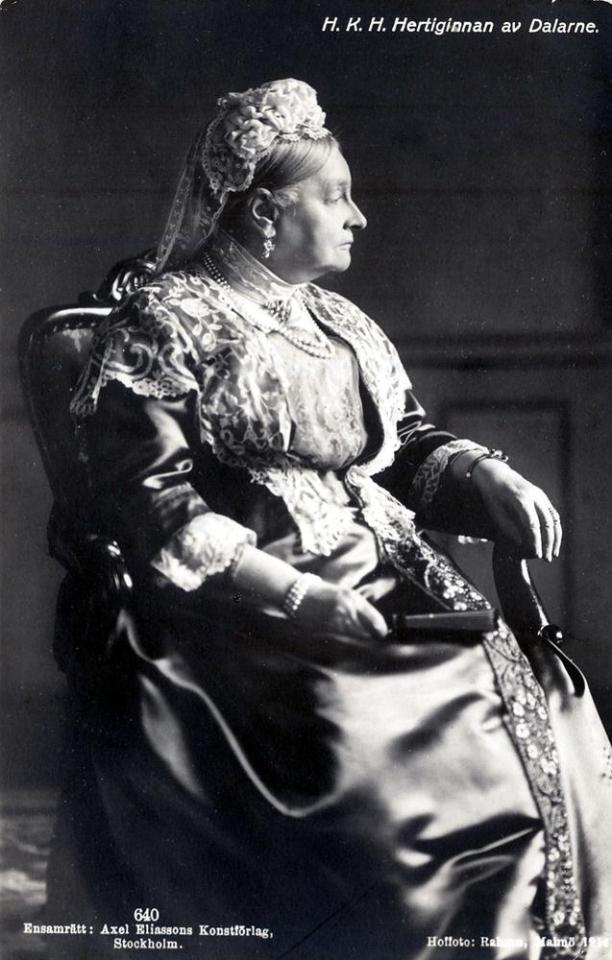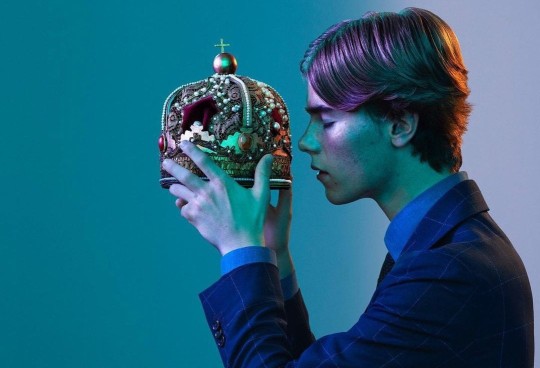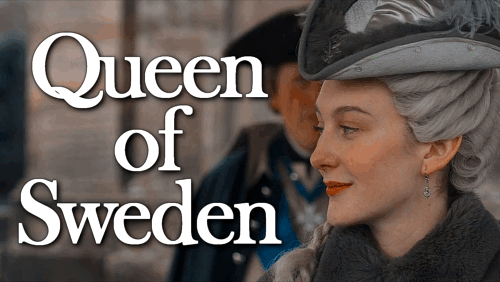#Amalia of Oldenburg
Explore tagged Tumblr posts
Text



Royal Birthdays for today, December 21st
Amalia of Oldenburg, Queen of Greece, 1818
Therese of Saxe-Altenburg, Duchess of Dalarna, 1836
Irina Pavlovna Paley, Russian Royal, 1903
#Therese of Saxe-Altenburg#amalia of oldenburg#irina paley#Irina Pavlovna#Irina Pavlovna paley#long live the queue#royal birthdays
10 notes
·
View notes
Photo

Amalia of Oldenburg (21 December 1818 – 20 May 1875) was Queen of Greece from 1836 to 1862 as the spouse of King Otto (1815–1867).
As the daughter of Duke Paul Frederick Augustus of Oldenburg (later Grand Duke of Oldenburg) and Princess Adelheid of Anhalt-Bernburg-Schaumburg-Hoym. She was born a Duchess of Oldenburg, though that title was never used in Greece.
When she arrived in Greece in 1837, she at first won the hearts of the Greeks with her refreshing beauty. After the Queen became more politically involved, however, she became the target of harsh attacks — and her image suffered further as she proved unable to provide an heir. She and her husband were expelled from Greece in 1862, after an uprising. She spent the rest of her years in exile in Bavaria.
45 notes
·
View notes
Text
Currently looking through some wikipedia articles to find inspiration for @germanaustriannoblesandroyals and just found Princess Amalie of Oldenburg aka Queen Amalie of Greece, Princess of Bavaria.
Damn that girl really had a great taste in fashion. I adore the dress she wore in that one portrait

#amalia of greece#amalia of oldenburg#women in history#historic women#amalie of greece#amalie of oldenburg
5 notes
·
View notes
Photo

Amalia of Oldenburg, Queen of Greece (21 December 1818 - 20 May 1875)
#amalia of oldenburg#amalie marie friederike#queen of greece#daughter of augustus grand duke of oldenburg#wife of otto of greece#history#women in history#19th century#art
63 notes
·
View notes
Photo

Frederik III of Denmark and Sofia Amalia of Braunschweig-Lyneburg.
11 notes
·
View notes
Note
Do you know anything about the tiara worn by Queen Amalia of Greece in her portrait by Stieler?

I don’t really know anything about Queen Amalia’s tiara. Royal Magazin thinks that is might be the same tiara worn by Amalia’s step-mother, Grand Duchess Cecilia of Oldenburg (below), but it’s difficult to tell from paintings that may or may not represent the tiara accurately. Queen Amalia didn’t have any children and I don’t know what happened to the tiara.

#Tiara Talk#Queen Amalia#tiara#Greece#Greek Royal Family#Grand Duchess Cecilia#Oldenburg#Germany#German Nobility#floral tiara#diamond#tiaras#diadem#diadems#royal tiaras#jewels#royal jewels#royal#royals#royalty#jewellery#jewelry#crown#crowns#crown jewels
54 notes
·
View notes
Text
Subtext and Culture, Young Royals, What's in a name?
I thought I was done, but I have material for one more post. I want to write more about how royal names work, because I've seen a lot of confusion and simple lack of knowledge in the tags, so think of this as more of an informative culture post than an analysis post of the show.
European royals and nobles have styles, names, titles, and houses. In addition, monarchs have regnal names.
A style is how you formally address someone, based on their rank and title. In Sweden, the only styles left are "majesty" and "royal higness", where kings and queens are addressed as "your majesty", and select members of the royal family are addressed as "your royal highness". In Swedish, these styles are often abbreviated as H.M. - Hans/Hennes Majestät and H.K.H. - Hans/Hennes Kungliga Höghet. In English, the abbreviations are HM and HRH.
In the show, you can see this when Simon meets the Queen, and shakily addresses her as "Your Majesty", or when Minou calls up August and says "Her Majesty the Queen has resolved your problems with the school fee".
In less formal, but still polite speech, you would use third person addressing when talking to or about the royals, and there are numerous examples of this in the show:
Anette to Erik: "How nice to see the crown prince again!"
Some aide to Wilhelm: "Could we get a shot of the prince shaking hands with the headmistress?"
Anette: "Wilhelm, sorry, the crown prince, how nice the memorial was!"
August: "The queen has asked me, personally, to take care of him."
Malin: "I just wanted to remind the crown prince that breakfast closes in five minutes."
Names for royals and nobles work just like the rest of us, but with one exception: Royals generally do not use last names, while lesser nobles do. They also tend to have several first names, and while they generally pick names for their children based on trends in society, they stay on the traditional conservative side, and they often pick names from their family history.
The show only tells us one first name for each member of the royal family: Kristina, Ludvig, Erik, and Wilhelm, so we have no idea what other names they might have.
In the real world, the name of the king of Sweden is Carl Gustaf Folke Hubertus, the crown princess' name is Victoria Ingrid Alice Désirée, and her oldest daughter's name is Estelle Silvia Ewa Mary, just to give you some flavour of what it could look like.
Titles are what sets higher nobles apart from us mere commoners, and have their origin in the feudal system of medieval Europe, which was a hierarchical socio-economic-military system where the lord of a land could grant a portion of his land, a fief, to a vassal in exchange for fealty - loyalty, taxes, and military service. Doing so would create a title, it would make the vassal a noble of a lower rank than his lord, because you could only create titles lower than the one you possessed. So, in general, kings could create dukes or lower, dukes could create counts or lower, and counts could create barons. The fief of a duke is called a duchy, a count ruled over a county, and a baron over a barony, although there were more ranks and more titles than that, depending on region and language, but those are the main ones.
Every single squabble or conflict or battle or civil war or war fought in the middle ages was over the titles, because the titles legally conferred ownership of a piece of land, and with it the rights of taxation and the economic value of that land. Over time, kingdoms got more centralized and the hierarchical nature of the system broke down, while the titles became more hereditary, and ownership of the land became less important, which meant that minor nobles lost the power to create vassals and fiefs, while the power to create titles was reserved for the monarchs, and titles created in this era usually only granted people a title for an area or a castle or a manor house that they already owned.
Going into modern times, European countries curbed title creation, but generally kept protections for existing titles and allowing them to be inherited according to whatever inheritance rules applied to each title. But if a title holder dies without a legal heir, the title is lost forever, which means that most modern day noble families want to make sure their title, their history, their legacy can survive long into the future. Also note that one person can hold several titles, and each of those titles can be inherited individually and under different rules.
In Sweden, there are currently 46 comital families (greve/grevinna - count/countess), 131 baronial families (friherre/friherrinna - baron/baroness), and 484 untitled lower noble families. There are no independent ducal families, instead the monarch grants royal children a ceremonial duchy at birth, for one of the 25 historical provinces of Sweden. This means that every single member of the Swedish royal family is a prince or princess of Sweden, and also duke or duchess of some province.
Again, we have no idea what province Wilhelm is the duke of in the show, while for example in the real Sweden, Princess Estelle is the duchess of Östergötland, Prince Carl Philip is duke of Värmland, and Princess Leonore is duchess of Gotland.
A noble house is a noble family or clan that is associated with one or more hereditary titles. Noble houses were founded when someone was ennobled and granted a title, and a noble house can branch and wither and split and form new houses over the ages, and it can gain or lose status as its members gain or lose noble titles and ranks.
In medieval times, these family bonds were very strong, and many major conflicts were a result of different houses fighting over various titles, for example the Wars of the Roses was a 32 year long civil war over the throne of England between the House of York and the House of Lancaster.
A royal house is a noble house that holds a title of king or queen, and for members of the royal family, their house name is what they have instead of a normal last name. We don't know which royal house Wilhelm belongs to in the show, but the current royal house of Sweden is the House of Bernadotte, named after the French rando we imported that I wrote about in the last post. Other houses that have been the royal house of Sweden throughout history include the House of Holstein-Gottorp, the House of Oldenburg, and the House of Vasa.
Finally, a regnal name is a name that a reigning monarch chooses for themselves when they ascend the throne, and it consists of one or more of their first names, and a roman numeral ordinal if there have been previous kings or queens with that name. If you're the first of your name to rule over a kingdom, you can choose to call yourself "the first", or you can choose not to.
In the show, Kristina doesn't appear to have an ordinal, but in real life Sweden there was a Queen Kristina who reigned in the middle of the 1600's. (She was probably a lesbian, caused the death of French philosopher René Descartes, abdicated in favour of her cousin, and moved to Rome and converted to Catholicism. As you do.)
In the real world, the king of Sweden reigns under the name Carl XVI Gustaf, because he's the sixteenth (tenth, actually) Karl to have been king of Sweden, and he also picked his second name because he liked it, or because he wanted to stand out from the fifteen other Karls who preceded him. His regnal name is pronounced Carl den sextonde Gustaf - Carl the sixteenth Gustaf.
Putting all of this together, the styles, the names, the titles, and the houses, and we can finally get the full formal names of various royals. Here are examples from some European royal families to demonstrate what it can look like:
HRH Madeleine Thérèse Amelie Josephine, Princess of Sweden, Duchess of Hälsingland and Gästrikland, of house Bernadotte.
HH Felix Henrik Valdemar Christian, Prince of Denmark, Count of Monpezat, of house Glücksburg.
HRH Ingrid Alexandra, Princess of Norway, of house Glücksburg.
HRH Prince William Arthur Philip Louis, Duke of Cambridge, of house Windsor.
HRH Catharina-Amalia Beatrix Carmen Victoria, Princess of the Netherlands, Princess of Orange, of house Orange-Nassau
HRH Emmanuel Léopold Guillaume François Marie, Prince of Belgium, of house Belgium.
HRH Infanta Sofía de Todos los Santos de Borbón y Ortiz, of house Bourbon.
These names are quite the mouthful, and the full names and styles are only used in very formal settings. Normally, these people are referred to with their highest title, and their chosen first names, i.e. Princess Madeleine, Prince Felix, Princess Ingrid Alexandra, Prince William, Princess Catharina-Amalia, Prince Emmanuel, and Infanta Sofía.
We only have the short name of Wilhelm, i.e. Prince Wilhelm, in the show. We don't have his full name, but if it follows form, he would be HRH Wilhelm <Name> <Name> <Name>, Prince of Sweden, Duke of <Province>, of house <House>.
Note that Wilhelm's father is not a king, he's a prince-consort, since Wilhelm's mother is the reigning monarch. The proper styles for his parents would be Her Majesty Queen Kristina (II?), and His Royal Highness Prince Ludvig.
The only other nobles in the show we have full names for is August and Felice, and August's full name would be August <Name?> Horn, Count (or Baron) of Årnäs. Felice's would be just Felice <Name?> Ehrencrona, because her parents are still alive and still hold whatever title they have.
Commoners marrying into a royal family is no longer forbidden or controversial, and all European royal families have had commoners marrying into them in the past few generations.
Based on precedence, if Wilhelm and Simon were to get back together and marry in the future, and if they get the consent of the Queen and the government, the following would happen:
Simon would be offered to be made a prince of Sweden, and with it gain the style of HRH.
Simon would be offered to be made a duke of some province.
If he accepts, he would lose his last name, and go from Simon Eriksson to HRH Simon, Prince of Sweden, Duke of <Province>, or simply Prince Simon.
If he declines, he would stay as Mr. Simon Eriksson.
When/If Wilhelm ascends the throne, he would chose a regnal name, and get an ordinal depending on the number of Wilhelms before him. If he's the first of his name, he would simply be King Wilhelm.
And if he and Simon are married when he ascends, Simon would not become king, he would become a prince-consort, and keep the title of prince.

350 notes
·
View notes
Photo










House of Hohenzollern & of Oldenburg: Princess Luise Ulrike of Prussia
Luise was the tenth child and sixth daughter of King Frederick William I of Prussia and his wife Princess Sophia Dorothea of Hanover. She was the sister of Frederick the Great, Margravine Wilhelmine of Brandenburg-Bayreuth, Margravine Friederike Luise of Brandenburg-Ansbach, Margravine Sophia Dorothea of Brandenburg-Schwedt, Princess Anna Amalia, Abbess of Quedlinburg and Princes August Wilhelm, Friedrich and August Ferdinand of Prussia.
Unlike most of her older siblings, she was interested in the military from a young age. This made her her father’s favourite child and her mother once said that Luise’s father could never say no to her. She was closest to her sister Sophia Dorothea and her younger brother August Wilhelm. Luise also shared interests in science and culture with Frederick the Great and he corresponded with her about his war experiences for most of his life. At her mother’s court she was introduced to Voltaire with whom she corresponded for the rest of her life.
Several high-ranking dynastic marriage were considered for Luise, among them ones to Britain, Spain and Hesse. In the end, it was decided that she should marry the future Swedish King. However her brother initally wanted to marry her sister Anna Amalia to Adolf Frederick, mainly because he thought her easier to control than Luise Ulrike, who was described as arrogant, haughty and scheming by contemporaries.
And scheme she did. Luise was a supporter of a absolute monarchy while Sweden, her new home was a parliamentary monarchy. During her tenure as Crown Princess and Queen, she allied herself with those that would support her ideas and did not even fear to plan coups. Furthermore, she stayed loyal to her homeland of Prussia and opposed Sweden’s declaration of war against Prussia in the Seven Years’ War. However, Luise’s power was closely linked to her husband. When his health declined and her son was declared an adult, she unsuccessfully opposed him receiving a seat in the royal council. Their strained relationship got even worse when Gustav decided to honor his engagement to his Danish bride instead of marrying his mother’s Prussian candidate. Luise retaliated by harrassing the bride once she arrived at court.
Nevertheless, Gustav ordered his mother be protected when his father died since he feared for her safety due to her having become more and more unpopular. When her son overthrew the parliamentary monarchy and replaced it by an absolutist one, she congratulated him. She was in Swedish Pomerania at the time they declared their loyalty to Gustav’s new constitution. His uncle Frederick the Great warned his mother that they were facing war now, Luise declared that she would defend the province against Prussia and everyone else attacking with her own blood.
The final blow to her relationship with her oldest son came during the succession scandal of 1777/78. Luise was visited by her younger sons who told her about all the women at court having affairs, except herself. She said that her daughter-in-law surely must be an exception as well, and her sons laughed and asked whether she hadn’t heared the rumors of Sophia Magdalena’s affair with Adol Fredrik, Count Munck. Luise ordered Prince Charles to investigate the situation. So Charles talked to the Count, who talked to the King and the King again talked to his brother Charles who blamed the whole situation on his mother. When Gustav’s son was born in 1778, the conflict erupted since Luise accused her son of having his son fathered by another man. She was supported by her favourite children Sophia Albertine and Frederick. In return, Gustav threatened to exile his mother to Pomerania. In the end, the entire royal family, except the royal couple, was forced to sign a declaration in which they resign their accusations. The relationship between mother and son remained broken until she was on her deathbed.
Luise Ulrike died in Svartsjö Palace, outside of Stockholm, on July 16th, 1782. She was 61 years old, and would have celebrated her 62nd birthday just 8 days later.
// Grace Molony in The Great.
#historyedit#women in history#historic women#Louisa Ulrika of Prussia#german history#swedish history#european history#Louise Ulrika of Sweden#Luise Ulrike of Prussia#Luise Ulrike of Sweden#House of Hohenzollern#House of Oldenburg#1700s#18th century#Prussian history
203 notes
·
View notes
Photo

~ “Amethyst and diamond demi-parure, mid-19th century.Originally owned by Queen Therese of Bavaria, Princess of Saxe-Hildburghausen (b.1792-1854) who bequested the jewels to her second son, King Otto of Greece, Prince of Bavaria (b.1832-1862). As he and his wife, Queen Amalia of Greece, Princess of Oldenburg b.(1818-1875), were childless these jewels were handed down to the king's nephew, Prince Ludwig Ferdinand of Bavaria (b.1859-1949), thence by descent. The parure his known within the family as the 'Queen Amalia Parure'. “ ~
2 notes
·
View notes
Text
i’ve been tagged by @a-biochemist-not-a-bird in this post, but i’m not very active on here lmfao
edit i was tagged again in this post but there’s no way in hell im doing this again goodnight
rules: tag 9 you want to know better (i don’t think i know enough people but anyway)
three ships (screw this, doing four): amalia true/penance adair (the nevers), elsa oldenburg/honeymaren nattura (frozen ii), alexi mayhew/emily kaldwin (dishonored ii), parvati holcomb/junlei tennyson (the outer worlds)
last song: sweet & lovely (1969), a barbershop polecat and standard written by norman starks and sung by forefront featuring mike rowe. link here. the harmonies! the tag! the last chord??? mike would make a great bass or bari for sure. growing up i loved to watch dirty jobs, so when i saw him again in my other love i was really happy. holy shit the man can sing
last movie: literally just finished watching frozen ii again, my favourite movie. makes me so emotional, especially since i watched the making of docuseries. all the snow sisters hugging makes me so happy, i get so much serotonin from that
currently watching: whose line is it anyway (uk), elementary, rizzoli & isles, SNL (s5), the golden girls, the l word, power book ii: ghost, call me kat
currently consuming: its 4:30am and im in bed so no
currently craving: a girlfriend
tagging 9 (i’m a musician i can only count to four idk how many are here but idc): @chocochipbiscuit @svpergirly @catargott @anoneun @westenray @spaceodysseyx @sapphic-luthor @moonlight-breeze-44 @nostradamus0
#my interests are gays and stuff from a century ago#barbershop#barbershop quartet#barbershop polecat#im too tired lesbian to do things like counting we’re just gonna roll with this#tag challenge#a biochemist not a bird
4 notes
·
View notes
Text










203 years since the birth in 21-12-1818
and 187 years since the wedding 22-12-1836
of HM Queen Amalia of Greece Duchess of Oldenburg
to HM King Otto of Greece
Duchess Amalia Maria Frederica was born on 21 December 1818 in Oldenburg, capital of the Grand Duchy of Oldenburg. She was the first child of Duke Paul Frederick Augustus of Oldenburg (later Grand Duke of Oldenburg) and his first wife, Princess Adelheid of Anhalt-Bernburg-Schaumburg-Hoym. She was less than two years old when her mother died, on 13 September 1820.
( 2nd and 3rd Collage)
On 22 December 1836, Duchess Amalia of Oldenburg married King Otto of Greece in Oldenburg. Born as the second son of King Ludwig I of Bavaria, Prince Otto of Bavaria had been appointed king of the newly created Kingdom of Greece in 1833. Otto visited Germany to find a bride after had been declared to be of legal majority and met Amalia in Marienbad in Bohemia.
Amalia was Lutheran and Otto Catholic, and they were wed in both a Lutheran and Catholic wedding ceremony. It was an understanding, that while they were allowed to keep their religion, any child born to them would be raised in the Orthodox religion of Greece. On 14 February 1837, she arrived in Athens in Greece.
When she arrived in Greece as a queen in 1837, she had an immediate impact on social life and fashion. She realized that her attire ought to emulate that of her new people, and so she created a romantic folksy court dress, which became a national Greek costume still known as the Amalía dress
(4th and 5th Collage)
She laboured actively towards social improvement and the creation of gardens in Athens, and at first won the hearts of the Greeks with her refreshing beauty and the patriotic love she demonstrated for her new home country. She was also the first to introduce the Christmas tree to Greece
During her first years in Greece Athens was a small town and the king and queen resided in a relatively small house
(6th Collage)
while the Old Royal Palace was being built
(7th Collage)
The cause of the childlessness of Otto and Amalia has been the cause of debate. During this time period, infertility was commonly considered the fault of the woman, and Amalia's frequent dancing and riding were blamed for it. She was exposed to various fertility treatments until her 35th birthday. Otto's brothers were given the right to the throne after him, but it was rumoured that queen Amalia wished to have her own brother Elimar of Oldenburg appointed heir instead.
The queen was eventually given more influence. Amalia was given the right to govern as regent in the case of the absence or incapability of the monarch or the heir to the throne. She acted as Regent of Greece in 1850-1851 when Otto was in Germany for health reasons, and a second time in 1861-1862, when Otto visited his family in Bavaria to discuss the succession crisis.
Her political influence was controversial. Her favorites were considered to have influence over her, notably her principal lady-in-waiting Baroness Wilhelmine von Plüskow was widely rumored to influence state affairs, particularly in matters relating to Austria, through both the queen and the king, which exposed her to controversy.
In February 1861, a university student named Aristeidis Dosios (son of politician Konstantinos Dosios) unsuccessfully attempted to assassinate the Queen. He was sentenced to death, but the Queen intervened, and he was pardoned and sentenced to life imprisonment. He was hailed as a hero for his attempt by certain factions, but the attempt also provoked among the people spontaneous feelings of sympathy towards the royal couple.
Just over a year later, an uprising took place in Athens while the royal couple were on a visit to the Peloponnese. The Great Powers, who had supported Otto, urged them not to resist, and Otto's reign came to an end. They left Greece aboard a British warship, with the Greek royal regalia that they had brought with them.
(8th Collage)
It was reported in the press that all their courtiers were left unmolested with the exception of the queen's controversial favorite Wilhelmine von Plüskow, who was exposed to sarcasm from the crowd when she left.
It has been suggested that the King would not have been overthrown had Amalia borne an heir, as succession was also a major unresolved question at the time of uprising.It is also true, however, that the Constitution of 1843 made provision for Otto to be succeeded by his two younger brothers and their descendants
King Otto and Queen Amalia spent the rest of their years in exile, at home in Bavaria. They decided to speak Greek each day between 6 and 8 o'clock to remember their time in Greece.
(9th Collage)
King Otto died in 1867. Queen Amalia survived her husband by almost eight years and died in Bamberg on 20 May 1875. She was buried beside the king at the Theatinerkirche in Munich.
The cause of the royal couple's infertility remained contested even after an autopsy was performed on the queen
(10th Collage)
203 χρόνια από τη γέννηση στις 21-12-1818 και 187 χρόνια από τον γάμο της στις 22-12-1836 της Α.Μ. Βασίλισσας Αμαλιας της Ελλάδας, Δούκισσας του Όλντενμπουργκ με την Α.Μ Βασιλιά Όθωνα της Ελλάδας
Η Δούκισσα Αμαλία Μαρία Φρεντερίκη γεννήθηκε στις 21 Δεκεμβρίου 1818 στο Όλντενμπουργκ, πρωτεύουσα του Μεγάλου Δουκάτου του Όλντενμπουργκ. Ήταν το πρώτο παιδί του Δούκα Παύλου Φρειδερίκου Αυγούστου του Όλντενμπουργκ (αργότερα Μεγάλου Δούκα του Όλντενμπουργκ) και της πρώτης συζύγου του, της πριγκίπισσας Αντελχάιντ του Άνχαλτ-Μπέρνμπουργκ-Σάουμπουργκ-Χόιμ. Ήταν λιγότερο από δύο ετών όταν πέθανε η μητέρα της, στις 13 Σεπτεμβρίου 1820.
Στις 22 Δεκεμβρίου 1836, η Δούκισσα Αμαλία του Όλντενμπουργκ παντρεύτηκε τον βασιλιά της Ελλάδας Όθωνα στο Όλντενμπουργκ. Γεννημένος ως δεύτερος γιος του βασιλιά Λουδοβίκου Α΄ της Βαυαρίας, ο πρίγκιπας Όθωνας της Βαυαρίας είχε διοριστεί βασιλιάς του νεοσύστατου Βασιλείου της Ελλάδας το 1833. Ο Όθωνας επισκέφτηκε τη Γερμανία για να βρει νύφη αφού είχε κηρυχθεί νομική πλειοψηφία και συνάντησε την Αμαλία στο Marienbad της Βοημίας.
Η Αμαλία ήταν Λουθηρανή και οΌθωνας Καθολικός , και παντρεύτηκαν τόσο σε λουθηρανική όσο και σε καθολική γαμήλια τελετή. Ήταν κατανοητό ότι ενώ τ��υς επιτρεπόταν να διατηρήσουν τη θρησ��εία τους, όποιο παιδί τους γεννιόταν θα ανατρέφονταν στην Ορθόδοξη θρησκεία της Ελλάδας. Στις 14 Φεβρουαρίου 1837 έφτασε στην Αθήνα στην Ελλάδα.
Όταν έφτασε στην Ελλάδα ως βασίλισσα το 1837, είχε άμεσο αντίκτυπο στην κοινωνική ζωή και τη μόδα. Συνειδητοποίησε ότι η ενδυμασία της θα έπρεπε να μιμείται εκείνη των νέων ανθρώπων της, και έτσι δημιούργησε ένα ρομαντικό παραδοσιακό φόρεμα, το οποίο έγινε εθνική ελληνική φορεσιά, είναι ακόμα γνωστή ως το φόρεμα της Αμαλίας.
Εργάστηκε ενεργά για την κοινωνική βελτίωση και τη δημιουργία κήπων στην Αθήνα, και στην αρχή κέρδισε τις καρδιές των Ελλήνων με την αναζωογονητική ομορφιά της και την πατριωτική αγάπη που επέδειξε για τη νέα της πατρίδα. Ήταν επίσης η πρώτη που εισήγαγε το χριστουγεννιάτικο δέντρο στην Ελλάδα
Τα πρώτα της χρόνια στην Ελλάδα η Αθήνα ήταν μια μικρή πόλη και ο βασιλιάς και η βασίλισσα έμεναν σε ένα σχετικά μικρό σπίτι
ενώ χτιζόταν το Παλαιό Βασιλικό Παλάτι
Η αιτία της ατεκνίας του Όθωνα και της Αμαλίας υπήρξε αιτία συζήτησης. Κατά τη διάρκεια αυτής της περιόδου, η υπογονιμότητα θεωρούνταν συνήθως το σφάλμα της γυναίκας και γι' αυτό κατηγορούνταν ο συχνός χορός και η ιππασία της Αμαλίας. Εκτέθηκε σε διάφορες θεραπείες γονιμότητας μέχρι τα 35α γενέθλιά της. Τα αδέρφια του Όθωνα έλαβαν το δικαίωμα στον θρόνο μετά από αυτόν, αλλά φημολογήθηκε ότι η βασίλισσα Αμαλία επιθυμούσε να οριστεί διάδοχος ο δικός της αδελφός Έλιμαρ του Όλντενμπουργκ.
Στη βασίλισσα τελικά δόθηκε μεγαλύτερη επιρροή. Στην Αμαλία δόθηκε το δικαίωμα να κυβερνά ως αντιβασιλέας σε περίπτωση απουσίας ή ανικανότητας του μονάρχη ή του διαδόχου του θρόνου. Ενήργησε ως Αντιβασιλέας της Ελλάδας το 1850-1851 όταν ο Όθωνας βρισκόταν στη Γερμανία για λόγους υγείας, και δεύτερη φορά το 1861-1862, όταν ο Όθωνας επισκέφτηκε την οικογένειά του στη Βαυαρία για να συζητήσει την κρίση διαδοχής.
Η πολιτική της επιρροή ήταν αμφιλεγόμενη. Οι αγαπημένοι της θεωρούνταν ότι ασκούσαν επιρροή πάνω της, ιδίως η κυριότερη ηταν της κυρίας επι των τιμών βαρόνης Wilhelmine von Plüskow, φημολογήθηκε ευρέως ότι επηρεάζει τις κρατικές υποθέσεις, ιδιαίτερα σε θέματα που σχετίζονται με την Αυστρία, τόσο μέσω της βασίλισσας όσο και του βασιλιά, γεγονός που την εξέθεσε σε διαμάχες. .
Τον Φεβρουάριο του 1861, ένας φοιτητής με το όνομα Αριστείδης Δόσιος (γιος του πολιτικού Κωνσταντίνου Δόσιου) αποπειράθηκε ανεπιτυχώς να δολοφονήσει τη Βασίλισσα. Καταδικάστηκε σε θάνατο, αλλά παρενέβη η Βασίλισσα και του δόθηκε χάρη και καταδικάστηκε σε ισόβια κάθειρξη. Χαιρετίστηκε ως ήρωας για την προσπάθειά του από ορισμένες φατρίες, αλλά η απόπειρα προκάλεσε και στον κόσμο αυθόρμητα συναισθήματα συμπάθειας προς το βασιλικό ζεύγος.
Λίγο περισσότερο από ένα χρόνο αργότερα, μια εξέγερση έλαβε χώρα στην Αθήνα, ενώ το βασιλικό ζεύγος βρισκόταν σε επίσκεψη στην Πελοπόννησο. Οι Μεγάλες Δυνάμεις, που είχαν υποστηρίξει τον Όθωνα, τους παρότρυναν να μην αντισταθούν και η βασιλεία του Όθωνα έφτασε στο τέλος της. Έφυγαν από την Ελλάδα με ένα βρετανικό πολεμικό πλοίο, με τα ελληνικά βασιλικά ρέγκαλια που είχαν φέρει μαζί τους.
Αναφέρθηκε στον Τύπο ότι όλοι οι αυλικοί τους έμειναν ανενόχλητοι με εξαίρεση την αμφιλεγόμενη αγαπημένη της βασίλισσας Wilhelmine von Plüskow, η οποία εκτέθηκε σε σαρκασμό από το πλήθος όταν έφυγε.
Έχει προταθεί ότι ο Βασιλιάς δεν θα είχε ανατραπεί εάν η Αμαλία είχε κληρονόμο, καθώς η διαδοχή ήταν επίσης ένα σημαντικό άλυτο ζήτημα την εποχή της εξέγερσης. Είναι επίσης αλήθεια, ωστόσο, ότι το Σύνταγμα του 1843 προέβλεπε τον Όθωνα τον διαδέχθηκαν τα δύο μικρότερα αδέρφια του και οι απόγονοί τους
Ο βασιλιάς Όθωνας και η βασίλισσα Αμαλία πέρασαν τα υπόλοιπα χρόνια τους στην εξορία, στο σπίτι τους στη Βαυαρία. Αποφάσισαν να μιλούν ελληνικά κάθε μέρα μεταξύ 6 και 8 η ώρα για να θυμούνται την ώρα τους στην Ελλάδα.
Ο βασιλιάς Όθωνας πέθανε το 1867. Η βασίλισσα Αμαλία επέζησε από τον σύζυγό της σχεδόν οκτώ χρόνια και πέθανε στη Βαμβέργη στις 20 Μαΐου 1875. Τάφηκε δίπλα στον βασιλιά στο Theatinerkirche του Μονάχου.
Η αιτία της υπογονιμότητας του βασιλικού ζεύγους παρέμεινε αμφισβητούμενη ακόμη και μετά τη νεκροψία που πραγματοποιήθηκε στη βασίλισσα.
#kingconstantine#danishroyalfamily#crownprincepavlos#queenannemarie#greek royal family#house of romanov#greekroyals#crownprincessmariechantal#danishroyals#princeconstantinealexios#princess theodora#princessmarieolympia#princeachileasandreas#princenikolaos#princesstatiana#princessalexia#princessnina#princesseirini#princearistidesstavros#princeodyseaskimon#princefilippos
4 notes
·
View notes
Photo


THE CEREMONY DRESS by atelier pronovias
paired with the fife tiara, the traditional crown jewels bestowed upon the princess upon her investiture as duchess of rothesay, hrh princess catherine further accessorised with a floor-length veil ( the material of which used to belong to her mother, queen mary, which counts as her something old and something borrowed ). so far there was no word of the something new and something blue. the understated silhouette was reminiscent of timeless art deco glamour, with draped white silk that accentuated the simple sophistication that the public usually associate with princess catherine. princess euphemia — the maid of honour! — was seen just outside the church arranging the three meter long train before entering in front of her older sister. many had expected that the twin blue colours from both countries’ flags would be a prominent theme in the ceremony, but the bride had chosen frosty silver and greys to compliment the pure white of her dress, as evident from the colours of the bridesmaids gown. perhaps it was a nod to the typical cool seasons in sweden and stockholm, which was only accentuated by the sudden sprinkle of snow as the bride and groom exited the cathedral to greet their crowd of well-wishers. the citizens were even treated to princess catherine’s swedish!
the bridal party consisted of four bridesmaids and two pageboys: crown princess anna d’ansembourg of luxembourg, princess eliza d’ansembourg of luxembourg, lady anna-amalia wittlesbach of greater bavaria, princess maïa arenberg of arenberg & aarschot, lord mathias stuart of greater bavaria, and duke wilhelm oldenburg of blekinge. the groom’s best man is his first cousin; king luca d’ansembourg of luxembourg. although the church ceremony clocked in just under an hour and thirty minutes, the festivities were set to continue as the couple and the congregation of international royals and nobles were whisked away in private jets to edinburgh, where the reception will take place.
9 notes
·
View notes
Photo

Princess Frederica Amalia of Denmark
3 notes
·
View notes
Photo

Bavarian Lover's Knot Tiara
Made by Caspar Rieländer in 1825 for Therese of Saxe-Hildburghausen, Queen of Bavaria - who loved pearls - on the occasion of her wedding. She gave the diadem to her daughter-in-law Amalia of Oldenburg, Queen of Greece. The diadem was inherited within the family and later was sold to the Bavarian State and is now displayed at the Residenz Museum in Munich.
#Bavarian Lover's Knot Tiara#Therese of Saxe-Hildburghausen#Residenz Museum#Caspar Rieländer#pearls#diamonds#jewelry
5 notes
·
View notes
Photo

Princess Adelheid of Anhalt-Bernburg-Schaumburg-Hoym, Duchess Paul Frederick Augustus of Oldenburg (23 February 1800 - 13 September 1820)
born in Rhineland-Palatinate to Victor II, Prince of Anhalt-Bernburg-Schaumburg-Hoym (1767-1812) and Amalia of Nassau-Weilburg (1776-1841)
married Duke Paul Frederick Augustus of Oldenburg (1783-1853) on 24 July 1817
had two children: Amalia, Queen of Greece (1818-1875) and Frederica, Baroness von Washington (1820-1891)
died at the age of 20 in Oldenburg
#adelheid of anhalt-bernburg-schaumburg-hoym#duchess paul frederick augustus of oldenburg#history#women in history#19th century#long live the queue
43 notes
·
View notes
Text
Amalia dress

Amalia of Oldenburg was one of the first to be interested in fashion matters in post-Ottoman Greece. She created a romantic folksy court dress which came to be known as the Amalia dress. The ensemble consisted of a loose-fitting, white cotton or silk shirt, often decorated with lace at the neck and handcuffs, over which a richly embroidered jacket or vest is worn. The skirt was ankle-length, unpressed-pleated silk. It was completed with a soft cap or fez with a single, long, golden silk tassel.
0 notes